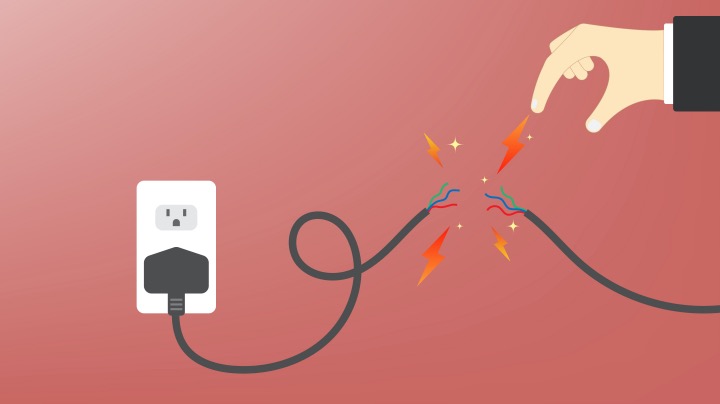Expert electrical system troubleshooting services for optimal performance.
Expert electrical system troubleshooting services for optimal performance.
Blog Article
Leading Tips for Effective Electric System Troubleshooting
Troubleshooting electrical systems calls for a methodical method, grounded in a thorough understanding of electrical principles and safety and security protocols. By acquainting oneself with circuit parts, making use of necessary devices, and sticking to a structured evaluation approach, specialists can successfully recognize and solve problems. The nuances of effective troubleshooting expand beyond simple technological knowledge; recognizing just how to document findings and focus on safety can significantly influence results. As we explore these important components further, it ends up being clear that grasping this process is not just advantageous yet important for success in the area.
Understand the Essentials
Recognizing the essentials of electrical systems is vital for reliable troubleshooting, as a strong structure allows technicians to detect and solve issues a lot more efficiently. A comprehensive grasp of electrical principles, such as voltage, current, resistance, and power, is important in determining the root creates of issues. Voltage is the electric prospective distinction that drives existing via a circuit, while resistance opposes the circulation of existing, impacting the total performance of the system.
Knowledge with circuit components, including resistors, capacitors, diodes, and switches, is additionally paramount. Each part plays a distinct role in circuit behavior and can impact performance when malfunctioning. Furthermore, recognizing collection and parallel circuit setups is crucial, as these arrangements influence the circulation of voltage and present within the system.
Furthermore, understanding of safety methods is indispensable. Technicians have to understand potential dangers, such as shock and brief circuits, to apply risk-free troubleshooting methods. By understanding these foundational concepts, service technicians enhance their ability to conduct reliable diagnostics and repairs, ultimately causing enhanced performance and integrity of electrical systems. This fundamental knowledge is the foundation of successful fixing undertakings.
Gather Necessary Devices
Effective troubleshooting of electric systems calls for the best collection of tools to diagnose and fix issues precisely. Vital devices include a multimeter, which determines voltage, current, and resistance, enabling for exact examinations of electric components.
Furthermore, insulated hand devices such as screwdrivers, pliers, and cable pole dancers are essential for securely controling electric connections. It is likewise a good idea to have a circuit tester accessible to confirm the presence of voltage in electrical outlets and cables. For even more complicated systems, a thermal imaging cam can help spot overheating parts, indicating prospective failures.

Comply With a Systematic Method
Having gathered the suitable devices, the next step in troubleshooting electrical systems is to follow a systematic strategy. A systematic technique ensures that technicians can recognize mistakes successfully and accurately, lessening downtime and stopping unneeded repairs.
Begin by assessing the system's schematic diagrams and requirements. Recognizing the design and operational criteria will certainly provide context for diagnosing problems. Next off, separate the problem location by using a process of elimination. This includes monitoring each element methodically, starting from the source of power and working in the direction of the load.
Make use of screening equipment, such as multimeters and oscilloscopes, to gather objective information regarding voltage, current, and resistance at various factors within the system. This empirical proof will assist your troubleshooting efforts and aid to confirm or remove potential causes of failing.
Additionally, take into consideration environmental elements that might affect the system's performance, such as temperature fluctuations or dampness access. A detailed assessment of electrical wiring, connections, and components will ensure that all opportunities are accounted for.
File Your Searchings For
Detailed documents is essential in the fixing process of electrical systems. This method not just help in comprehending the origin reason of the issue however also serves as a recommendation for future troubleshooting initiatives.

Additionally, keeping a log of parts changed or repair work executed is important. This information sustains stock administration and can aid evaluate the durability and reliability of specific parts.
Inevitably, the documents procedure ought to be complete yet succinct, enabling very easy retrieval and review - electrical system troubleshooting. By prioritizing detailed documentation, professionals can develop a beneficial knowledge base that not just help in current troubleshooting but also equips future maintenance efforts, consequently improving general system integrity

Prioritize Precaution
Identifying the intrinsic risks associated with electric systems is essential for ensuring safety and security throughout troubleshooting. Electrical shock, burns, and equipment damage are simply a few of the potential dangers that specialists face. Focusing on precaution is not just a legal obligation yet additionally a moral crucial that safeguards both the professional and the surrounding environment.
Before starting any kind of troubleshooting job, technicians need to don appropriate individual safety equipment (PPE), consisting of shielded handwear covers, shatterproof glass, and flame-resistant apparel. Making certain that the job area is dry and without mess can considerably minimize discover this info here the threat of mishaps. In addition, it is essential to de-energize circuits prior Home Page to beginning any type of work, confirming that they are not endure using a multimeter or voltage tester.
Developing clear communication methods with team participants is additionally essential; this makes sure that everyone understands prospective dangers and the status of the electrical system being worked with. Lastly, having an emergency reaction strategy in position can verify important in the event of an occurrence. By prioritizing safety actions, technicians can successfully reduce risks and promote a safer workplace.
Verdict
Reliable electric system repairing relies on an extensive understanding of essential principles and a systematic technique. Prioritizing security measures makes certain the health of people entailed and the integrity of the electrical system.
Report this page